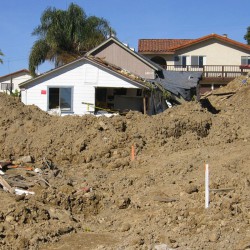 View larger
View larger
Mini-Landslide
New activity
Participants explore how different materials (sand, gravel, lava rock) with different water contents on different slopes result in landslides of differing severity.
Open Activity
Family Take-home Activity
A take-home that can be sent with patrons that wish to do STEM activities at home. These at-home activities cover similar topic areas as the associated activity and could be handed out at the conclusion of a program or left on a circulation desk for patrons to take home.
-
Rating
-
Participants Enjoyed the ActivityParticipants Learned from This ActivityActivity Instructions Were Clear and Easy to FollowWould Recommend
Related Programming Resources
Reviews
No doubt highly applicable to coastal communities right now.
This activity, which comes to us courtesy of the Integrated Teaching and Learning Program out of the University of Colorado Boulder’s College of Engineering, may seem a little “dry” and “academic” at first glance, but it’s a whole lot of fun to execute! Simply rephrase some of the language into a more kid-friendly dialect, and you have yourself a bonkers program full of rampant chaos and destruction, with choice tie-ins to geology and hydrology and so forth, which is just about perfect for a Makerspace program or a Summer Reading activity.
Just make sure you provide tarps! Lots of tarps. And rags. Or perhaps towels, if you really want to be effective at corralling the aforementioned chaos.
If you’re a teacher or educator, the educational standards may prove handy for you. Otherwise, skip straight to the Materials List and the Procedure instructions, which are truly crucial to executing this craft without any major hiccups. Although, now that I’ve said that, I happen to think hiccups are a delightful component of any craft relating to natural disasters like landslides. And being comfortable with utilizing the Vocabulary/Definitions section in casual conversation while executing the activity is something I highly recommend! And don’t neglect to scan through the Activity Extensions section in case there are a few that appeal to you; some require additional materials. The “Family Take-home Activity” is none other than the “Edible Destruction” activity which we have also run in our library Makerspace to great acclaim (http://clearinghouse.starnetlibraries.org/engineering/167-edible-destruction.html). My brain is full of whispers, all of them saying “everything is connected!” But in a non-sinister way. Thanks, science.
One side note: the Model House Template (linked to in the activity) results in annoyingly tiny little houses which the kids themselves (at our library, at least) were not able to build without frustration. It might be worth pairing this activity with something like the “Build a City” worksheets (https://www.education.com/worksheet/article/build-a-city-11/) out there on the Internet. The only proviso is that you make something easy to knock off of the roof as a measure of instability, as that’s one of the things measured on the handout for the Mini-Landslide activity.
Last but not least, you don’t have to feel too attached to the downspout as built and described in the activity. The one pictured on the instructions is sturdy and resolute and will never fail you, but it also costs money and you’re unlikely to ever need two feet of downspout ever again. We used a length of PVC pipe someone had lying around, and I imagine you could use anything watertight and sturdy enough to remain at an angle with the weight of the water added. Follow the rule of all good engineers: test your equipment ahead of time, and ensure it doesn’t fall apart the moment you add live participants!



